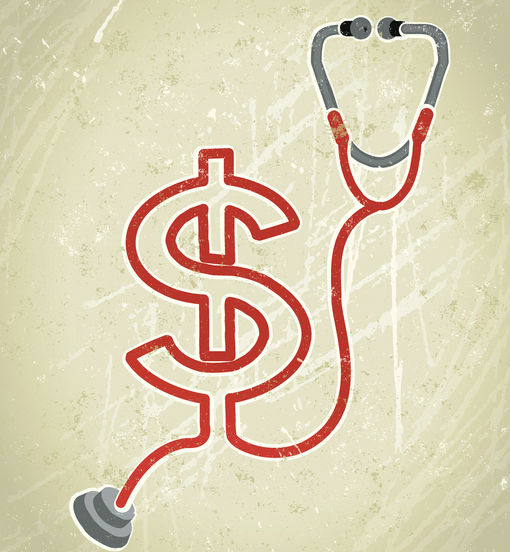
On July 29th, the Centers for Medicare & Medicaid Services (CMS) proposed changes to improve the Quality Payment Program’s Merit-based Incentive Payment System (MIPS). This is the latest CMS announcement in a series of value-based care-related policy changes, including Pathways to Success and Primary Cares Initiative. CMS continues to double down on value-based care programs (and rightly so), but the question must be asked: how are individual providers supposed to keep up?
MIPS originated as part of the Medicare Access and CHIP Reauthorization Act of 2015 (MACRA) to help push Medicare Part B fee-for-service revenue toward a performance-based payment system. MIPS is currently CMS’ largest value-based care payment program and is a stepping stone for providers to graduate to more advanced programs. Individual clinicians have been required to participate in MIPS if they have over a certain threshold of Medicare revenue ($90K in 2018) and Medicare patients (200 in 2018). Clinicians are only excluded from MIPS if they fall below those thresholds (which tend to increase every year) or if they join an entity that is aggregating providers to participate in a more advanced Alternative Payment Model (which is a topic for a separate article). MIPS-participating clinicians are scored on a points scale based on four weighted performance categories, including Quality, Cost, Improvement Activities, and Promoting Interoperability. Given that the program is meant to be budget neutral, clinicians are then ranked against their peers by their scores and are awarded bonuses or charged penalties based on where they fall on the distribution curve.
For now, CMS has set a very low bar for avoiding penalties given the ramp-up time it takes practices to build the infrastructure required to successfully report on the data needed to participate in the program. In 2017 and 2018, 93.1 percent and 97.6 percent of clinicians participating in MIPS received a positive payment. Each year, CMS raises the level of competition and range of incentives or penalties for providers. While we continue to see a drop off in MIPS participants as eligibility thresholds increase or as providers graduate to (or take refuge in) advanced Alternative Payment Models, there were still over 916K physicians that chose to go for MIPS on their own in 2018.
CMS’ recently proposed changes would push to simplify reporting to fewer measures that are more specific to different provider specialties. While these proposed changes are not finalized, they definitely suggest that this program and other performance-based payment systems are not going away anytime soon.
CMS isn’t the only one adding emphasis to value-based care – all payer types, including Commercial, Medicare Advantage, and Medicaid are moving toward performance-based payments. 34 percent of the total US health care payments were tied to alternative payment arrangements in 2017. Many large national health plans have set significant goals for their transition to value-based arrangements, such as Cigna, who says they’ve already exceeded their goal of having over 50 percent of their Medicare Advantage and Commercial payments in their top 40 markets transitioned to alternative payment arrangements.
Yes these programs are constantly changing but no they are not going away – so here are a few suggestions for how providers can keep up:

NEMT Partner Guide: Why Payers and Providers Should Choose MediDrive’s TMS
Alan Murray on improving access for medical transportation.
- Make No-Regret Investments: Any vendor that is selling an individual primary care provider a technology platform with steep upfront costs is out-of-line. These small practices can’t afford heavy, high-implementation cost solutions, and instead should be focused on tactical investments in light, low (or no) cost to provider solutions that solve very specific problems. Providers should understand the specific cost or quality measures they are struggling with and seek solutions that can help.
- Versatility is Key: Each of the programs that providers participate in has different measures or reporting requirements and it is becoming increasingly difficult for small practices to keep track of how to succeed across all of their performance arrangements. Practices should focus on the overlap between programs and invest in resources that are flexible enough to adapt as programs change over time.
- Distribute the Workload: In order to succeed in MIPS and other similar programs, Physicians can’t go at this alone. Physicians should lean on NPs, MAs, and other staff when applicable so that each member of the team, including the Physician, spends their limited time focused on the highest value actions they can complete.
As MIPS and other performance-based payment programs evolve, the downside risk will continue to grow. This means that, eventually, providers will be on the hook to cut checks if they can’t perform. Individual providers must act now to stay on top of the distribution curve.
Photo: Meriel Jane Waissman, Getty Images
Zack focuses on helping healthcare providers, technology, and services companies scale. Zack currently leads provider strategy at Stellar Health, a healthcare technology startup working to bridge the incentive gap between insurers and providers. He brings significant experience developing value-based care strategies and advising growth through mergers and acquisitions from his previous role in Deloitte Consulting's Healthcare Strategy & Operations practice. Zack also has previously served as a startup adviser at Boston Children's Hospital's Innovation and Digital Health Accelerator and in PwC's Healthcare Advisory practice.
This post appears through the MedCity Influencers program. Anyone can publish their perspective on business and innovation in healthcare on MedCity News through MedCity Influencers. Click here to find out how.








